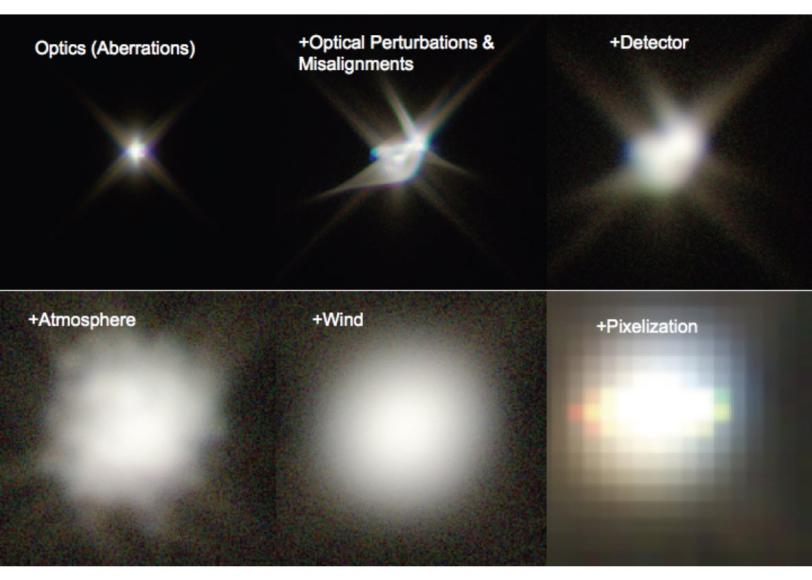The LSST: Knowing the Telescope Before It is Built
In repeatedly and systematically surveying the sky with deep, large-field-of-view images in six optical color bands on a 3 billion pixel camera for years, the Large Synoptic Survey Telescope will home in on the nature of dark energy and increase our knowledge of the optical universe.
By Jack Singal, KIPAC
In repeatedly and systematically surveying the sky with deep, large-field-of-view images in six optical color bands on a 3 billion pixel camera for years, the Large Synoptic Survey Telescope will home in on the nature of dark energy and increase our knowledge of the optical universe. The observing process will result in nearly 7,000 Terabytes—that's 7,000 trillion bytes—of data per year, an amount that is more reminiscent of traditional high energy physics experiments than astronomical telescopes. Indeed, analyzing the LSST data will require a marriage of techniques from the two fields.
A collaboration of LSST scientists from several institutions, including the Kavli Institute for Particle Astrophysics and Cosmology at SLAC National Accelerator Laboratory and Stanford University, is already in the process of understanding almost-real LSST data with the Image Simulator, or ImSim. The ImSim combines a virtual universe, atmosphere, and LSST telescope that exist entirely in computer bits. It creates a fake but realistic sky full of galaxies, quasars, supernovae, stars, and solar system objects that statistically resembles what we know of our real one, and rides with photons of light that are coming in from these objects as they enter our atmosphere, fly through the mirrors and lenses of the telescope, and hit the camera’s detector. All the while the subtle changes and imperfections in the optics and atmosphere are represented in a realistic way, based on current best knowledge of the instrument and the properties of its site atop Cerro Pachón in the Chilean Andes.
A case study of why the ImSim is a crucial part of LSST development can be seen in the quest to understand dark energy through weak lensing. Dark energy, the mysterious force that is currently accelerating the expansion of the universe, affects how large clusters of galaxies grow. In turn, the gravitational influence of those large masses bends the light that comes to us from other objects all over the sky, subtly distorting their shapes.
Using those distortions to probe dark energy's imprint on the growth and distribution of structure in the universe requires a deep understanding of instrumental and atmospheric effects on the shapes of objects seen through the telescope. KIPAC graduate student Chihway Chang has led an effort to use the ImSim to study the subtle systematic errors introduced in weak lensing measurements by individual physical effects in the telescope, such as the changing atmosphere or small optical misalignments. This allows an understanding of how these may affect constraints on dark energy, and informs the development science analysis algorithms that best use the available data.
The process of generating a simulated sky and following through to a simulated image requires significant computing resources. KIPAC postdoc Deborah Bard, along with affiliate Garret Jernigan, have used SLAC's unique computing infrastructure to generate thousands of simulated LSST sky images, which are then fed to the LSST data management team and used as an input for developing the data analysis algorithms. The active collaboration and interplay between the LSST instrument teams, science groups, and data management group are necessary to provide constant information and feedback, so that evolving instrument properties are reflected in the simulator, which can then inform the developing science analysis and data management systems.
Other KIPAC scientists who have contributed to the LSST ImSim include Professor Steve Kahn, who is also project manager for the LSST camera, and staff scientists Kirk Gilmore, Andrew Rasmussen, Marina Shmakova and Stuart Marshall. SLAC is one of the leading institutions in the LSST Corporation, an independent entity established to manage the LSST project.
